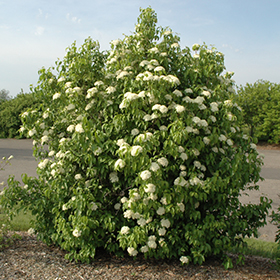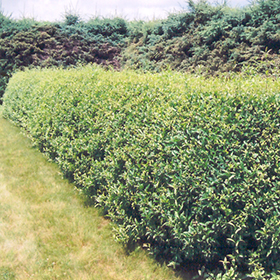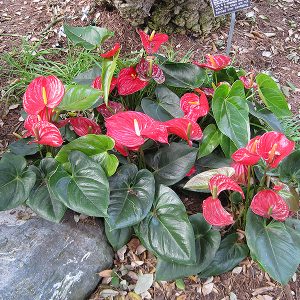Description
Growth & Care
| USDA Plant Hardiness Zone | 2b |
| Growth Rate | Average |
| Recommended Pruning Method | Prune After Flowering |
Foliage
| Foliage Type | Deciduous |
| Fall Color | Red |
| Plant Form | Upright Spreading |
Flowers
| Flower Period | Spring |
| Flower Color | Yellow |
| Flower Fragrance | Unscented |
Additional Categories
| Additional Category | Viburnum |
| Landscape Application | Accent, Massing, Screening, Garden, Naturalizing |
Details
Planting & Growing
Nannyberry will grow to be about 15 feet tall at maturity, with a spread of 10 feet. It tends to be a little leggy, with a typical clearance of 4 feet from the ground, and is suitable for planting under power lines. It grows at a medium rate, and under ideal conditions can be expected to live for 40 years or more.
This shrub performs well in both full sun and full shade. It is very adaptable to both dry and moist locations, and should do just fine under average home landscape conditions. It is not particular as to soil type or pH. It is highly tolerant of urban pollution and will even thrive in inner city environments. This species is native to parts of North America.
Landscape Attributes
Nannyberry is a multi-stemmed deciduous shrub with an upright spreading habit of growth. Its average texture blends into the landscape, but can be balanced by one or two finer or coarser trees or shrubs for an effective composition.
This shrub will require occasional maintenance and upkeep, and should only be pruned after flowering to avoid removing any of the current season's flowers. It is a good choice for attracting birds to your yard, but is not particularly attractive to deer who tend to leave it alone in favor of tastier treats. Gardeners should be aware of the following characteristic(s) that may warrant special consideration:
Suckering
Nannyberry is recommended for the following landscape applications:
Accent, Mass Planting, Hedges/Screening, General Garden Use, Naturalizing And Woodland Gardens
Ornamental Features
Nannyberry features showy creamy white flat-top flowers at the ends of the branches in mid spring. The royal blue fruits are held in abundance in spectacular clusters from late summer to late winter. It has dark green deciduous foliage. The glossy pointy leaves turn an outstanding brick red in the fall.






